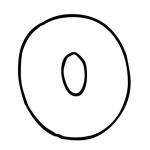By planting potatoes in the spring, every gardener expects to get a good harvest in the fall. But over time, varieties degenerate, and productivity decreases every year. To avoid this, it is recommended to update varieties every five years. These methods will help you quickly increase the amount of planting material of the desired variety.
To propagate potatoes using shoots, you need to select tubers of medium ripening and germinate them in the light or in a dark room. The room temperature should be 15-18 degrees. When growing potatoes in the light, the sprouts grow green or purple; when grown in a dark room, the sprouts are white.
One tuber can produce shoots as many times as possible.
To prevent the tuber from drying out, it needs to be sprayed with water every three days. The shoots are broken off when they grow from 3 to 5 cm in length. The shoot is separated as follows: hold the shoot at the root with your right hand, carefully turn the tuber with your left hand. The sprout must be held carefully so as not to crush it, as a damaged sprout can rot in the ground. Shadow shoots must be broken off carefully so as not to damage underdeveloped ones.
The resulting shoots are planted in a box with fertilized soil at a distance of 5-7 cm in a row. The row spacing must be at least 10 cm. The boxes are installed in the light or in a dark room. The sprouts are buried so that 1/3 of the sprout remains on the surface. The row spaces are watered with warm water and sprinkled with humus. Sprouts are accepted within 5 days. After 20 days they should be planted in the beds. The row between seedlings should be at least 20 cm, and the row spacing should be 65 cm. It is recommended to plant seedlings in gloomy weather.
The first days after planting, seedlings must be protected from direct sunlight!
Tuber division
It is necessary to germinate the tubers in the light in a warm room for 21 days. In the upper part of the tuber, the shoots from the eyes appear first, followed by the lower ones. In total, from 12 to 15 shoots grow on one tuber. The tuber must be divided into parts so that each of them has a sprout.
The soil for planting should be prepared in advance. The earth is dug up with a bayonet, unbroken lumps are removed, loosened and leveled with a rake. Dig holes at a distance of 35 cm from each other. You need to add a handful of ash to each hole and mix it with the soil. Plant part of the sprouted tuber in the holes, sprouts up, and sprinkle with soil. Disembarkation must be completed by June 19. Subsequent care includes loosening the soil after rain and removing weeds. Hilling must be done twice.
To avoid late blight, it is necessary to carry out preventive treatment of plants with a 3% solution of Bordeaux mixture before the flowering period.
Reproduction by layering
Sort out the germinated tubers and prepared for planting, select the largest ones and plant them in prepared holes at a distance of 15 cm from each other. Make the row spacing 40 cm wide. In well-fertilized, sun-warmed soil, sprouts will appear in a week. When the tops grow up to 10 cm from the surface of the ground, the bush must be dug up along with the tuber. You need to dig very carefully so as not to damage the roots.
In hot weather, it is necessary to cover the dug up bushes with a wet cloth or water them with water so that the roots do not dry out. Carefully separate strong sprouts with young roots from the tuber. The sprouts should have several leaves. Seedlings are sorted by size and planted.
Before planting, the soil must be dug up and loosened well. On the eve of planting, you need to water abundantly to saturate the soil with moisture. Then use a hand cultivator to loosen the soil between the rows to a depth of 15 cm, then use a hoe to make furrows along the rows 12 cm deep. Plant seedlings in the furrows at an angle, pointing the tops to the north. The distance between seedlings is at least 15 cm. It is necessary to deepen the seedlings so much that 6-8 cm of green mass remains on the surface.
Water should not be poured into the grooves so that a crust does not form, creating inconvenience for the roots. Watering is carried out between rows.

Further care consists of the following activities:
- watering;
- fertilizer;
- loosening the soil;
- hilling;
- weeding;
- hilling.
The tubers from which the sprouts have been separated must be sprayed with a soda solution, diluted in the following proportions:
- water-1 liter;
- baking soda-5 gr.
Treated tubers must be planted back into the soil. After the second germination, the shoots are broken off again and planted, and the tubers are planted a third time. You can continue breeding further, but this will not be advisable.
Cuttings
Propagation by cuttings is one of the common methods of propagation. To do this, you need to choose the strongest bush in the garden. It is recommended to do this at the moment when the bush blooms. The bush is marked and after the flowering period has passed, the tops are cut from the bush.

The cut branches are divided into parts of 4 cm, and each part of the cutting should have 1 leaf. The top leaves of shoots going to cuttings need to be cut off.
To disinfect the cut cuttings, soak them for 4 hours in a weak solution of potassium permanganate. The place for planting cuttings should be shaded. The soil for cuttings should be loose and moist at the time of planting. It is better to plant cuttings on a cloudy day. The distance between cuttings is at least 4 cm, row spacing is 20 cm.
The seedlings are planted without tilting, so that the leaves are slightly sprinkled with soil. After this, the cuttings must be watered and mulched with a thin layer of humus or peat.
After 20 days, tubers will begin to form in the soil, which can be dug up with cuttings after 15 days. Dry the resulting potatoes well, put them in cloth bags and store them until the next season.
Growing potatoes by seeds
The method of growing potatoes from seeds is little known and not popular. Gardeners are accustomed to planting tubers the old fashioned way, so no one thinks about collecting seeds. However, from seeds collected after flowering you can obtain high-quality planting material.
After flowering, green balls are removed from the bushes. Outwardly, they resemble unripe cherry tomatoes. The collected fruits are placed in a dark room until they become soft and light. Next, cut, remove the seeds and wash them thoroughly under running water. Then the seeds are well dried and sown in the soil.
Propagation by seeds is the safest, due to the fact that diseases do not accumulate in the tubers!
Combining propagation methods
Using the combined method of accelerated propagation, 100 kg of planting material can be obtained from 1 kg. potatoes.
The combination is performed as follows:
- Propagation is carried out by sprouts. The sprouts are broken off and planted;
- The tuber is divided into parts according to the number of eyes and planted in the soil;
- When the bush grows up to 20 cm, you need to divide the bush;
- After the end of the flowering period, propagate by cuttings.
Potato stimulating cut
A special cut on the tuber helps to increase the yield. It is recommended to make the incision before germination of the eyes begins. The cuts are:
- transverse;
- ring.

With a transverse cut, the eyes on the tuber sprout in all parts - upper, middle and lower. While during normal germination, in most cases, the eyes located in the lower part do not produce sprouts.
The cut is made perpendicularly on the tuber, deep enough, leaving 1 cm of the tuber uncut. Thanks to this cut, growth nutrients are distributed evenly over all eyes, and as a result, a bush grows with a large number of sprouts.
The ring cut stimulates the appearance of a large number of sprouts. It is performed 1cm deep around the entire circumference of the tuber.
There are two types of ring cut:
- transverse;
- longitudinal.
With a transverse incision, the flow of active substances to the upper part is reduced and redirected to the side and lower parts. As a result, the eyes of the lower and middle parts are activated, and their number on the tuber increases.
With a longitudinal cut, the sprouts in the lower part do not develop, but in the upper part they develop more actively.
To obtain the best result, it is recommended to keep the cut tubers in a warm room with a temperature of +15-19 degrees for a month.
Incisions are made only with a tool disinfected in a solution of potassium permanganate.

Five-year breeding scheme
Propagation system based on clones or growing from seeds:
- 1st year: mini-tubers obtained from healthy plants;
- 2nd year: first field variety renewal from mini-tubers;
- 3rd year: super-super elite (second generation potatoes planted in the field);
- 4th year: super elite (generation obtained after the previous one);
- 5th year: elite (updated 4th generation potato variety).
With the help of accelerated propagation, it becomes possible to increase the yield and improve planting material without special material costs.
Crumbly tasty potatoes bought at the market can live in the garden. Just a few tubers are needed to plant a couple of buckets in a year.
How does potato propagation occur? What are the methods and how are they used in the agricultural sector?
A good variety of potato that suits the gardener in all respects is quite difficult to find. In practice, long searches do not always end in success.
Any potato variety should not be grown for more than ten years. It needs to be replaced with another, more stable one.
If you have the opportunity to purchase or receive as a gift at least one tuber of a wonderful new variety of potatoes, there is no need to refuse. From one tuber you can get about two buckets of excellent seed material per season.
Potatoes are a plant from the nightshade family. In its homeland in South America, in a warm and humid climate, it grows as a perennial.
If you conduct an experiment and leave the plant in the soil, then under conditions of a warm winter and large snow cover, it will begin to develop again in the spring.
Such winters are quite rare. Even in European countries with a warm climate, the weather has recently presented not very pleasant surprises in the form of snowfall or frost.
As a perennial, potatoes have not become widespread because their modified roots in the form of tubers are used for food. It is precisely for this harvest that it is planted every year. To harvest, the entire bush is dug up and cannot grow further.
Potatoes can be propagated by vegetative or seed methods. Vegetative method - using a part of the plant.
Seed method - ripened seeds.
The good thing about potatoes is that they can reproduce in all ways. Parts of the plant suitable for this:
- Roots. It is on the roots that tubers form. They are modified roots.
- Pieces of tubers with eyes are an excellent material for.
- Stem. If you cut off the tops of green stems with leaves from a potato bush, they will take root perfectly. In their place, new shoots are formed, which can also be used for propagating potatoes.

This procedure can be carried out up to three times per season. Each bush produces several good tubers. They, in turn, are also used to obtain seed material.
Seeds. Ripened potato seeds are collected in the fall. To do this, you need to leave one potato bush untouched. After the main harvest is collected, the seeds are collected, which are enclosed in green berries. They are dried and small seeds are extracted, which are stored in a dry, frost-free place until sowing.
This method is used quite rarely due to its low efficiency and high labor intensity. For experimenters and gardening enthusiasts, growing any plant from seeds is a real challenge.
It is long and painstaking, but it is quite possible to acquire new varieties using seed propagation.
Most often, seed sowing is used by breeders to develop new varieties. They pollinate one variety with another and get a third, which is then tested for resistance to diseases and weather disasters.

Potato seeds are sown and germinated at home, so you can start the process even in January with additional lighting. After 10-14 days, the first shoots appear. From the moment they appear until the seedlings are planted in the ground, you need to count another month and a half.
When sowing seeds in January, already in March it will be possible to use the tops of the plant for cuttings.
A month and a half after planting the seedlings in the ground, you can carefully remove the formed tubers from the soil.
By dividing them into parts with eyes and planting them in already prepared and warmed soil, you can get additional tubers.
This shortcut method is not used often, but it is quite effective.
Potato propagation by tubers
In agricultural practice, potatoes are usually propagated using tubers. This method is called the main one, since it is the most common and least labor-intensive.
We recommend choosing high-quality potatoes that show no signs of damage. Optimal weight - up to 100 g. So that the potato harvest can be harvested as early as possible, it is better to germinate the tubers. To do this, the planting material is first heated at a temperature of 22-25 degrees. It takes about 3 days to activate the necessary processes. After this, vernalization is needed.
It is better to place the potatoes in one layer in a well-lit, ventilated room. The temperature should not be higher than 20 degrees. It is important not to place the potatoes too close so that the sprouts do not begin to intertwine. Also, during this same period it is worth treating potatoes for diseases. You can use the drugs Fitosporin, copper sulfate, Maxim. To protect against pests, we recommend using Prestige.
It is better to carry out the vernalization procedure using a wet or combined method. If you decide to use moisture to speed up the process, then you should start 20-25 days before the intended planting. After the root crops have greened up in the sun, they need to be placed in prepared containers.
It is better that the selected boxes or other containers are not solid or that the material allows air to pass through well. The laid potatoes are sprinkled with wet peat or sawdust. You can make several layers.
If the appearance of sprouts earlier is not desirable, then to propagate potatoes using tubers, planting material is left in the sun for about two weeks. And then they use the same technique with boxes, but they keep the potatoes there for about a week.
If the root vegetables are large or there are few of them, you can cut the potatoes in front. This should be done no earlier than 4
days before planting. It is better to sprinkle the cut areas with crushed activated carbon or cinnamon. As a last resort, ash is used. Each piece should have several eyes that have sprouted well.
It is important to plant such a crop in a well-lit area. The presence of a tree in a potato bed is unacceptable with proper care and propagation. It is better to sow the selected area with green manure a season before planting root crops. Legumes are best suited.
Vegetative methods of propagation
If it is not possible to grow potatoes with whole tubers, then they can be propagated using one of the following methods:
With your eyes. The potato tuber is placed on the roots of the plant. The place where it is attached to them is called the umbilical cord. The opposite side is the top of the tuber. At this place there is the largest number of dormant buds, which are called ocelli.
Using a sharp knife, the eyes are removed from the tuber and placed in boxes with loose soil for germination. The thickness of the soil layer above them should be about two centimeters. Plantings need to be constantly moistened and hilled after sprouts appear.
Plants that have grown up to 10 cm can be planted in open ground. You can plant the eyes immediately in a permanent place, provided there is sufficient fertility and looseness of the soil.
Such plantings can be carried out at a soil temperature of at least 10 °C.
An important condition for tender and immature plants is protection from frost. The best temperature is 16-22 °C. Tuberization occurs most intensively at night temperatures of 10-13 °C.
Seedlings. The tubers are laid out in one layer in a box, sprinkled with sawdust, and moistened with water. When the sprouts reach a height of 5-7 cm, they, along with the roots, are carefully broken off from the tuber.

Such a sprout can already be planted in the ground, provided that soil moisture is constantly maintained.
The tubers are left in the same substrate and germinated again. This can be done three or four times.
The last shoots are left on the tuber and planted in the ground along with its pieces. Planting is best done in cloudy weather. The distance between plants in a row should be 5-10 cm.
It is better to make a gap of about half a meter between the rows.
There is no need to save on row spacing. A plant that is provided with good lighting and sufficient space will produce a much larger harvest than one that grows in cramped conditions.
Cuttings. A very interesting and unusual method. The experimental potato tuber is planted in the soil using the usual method, like the rest of the mass.
Next steps are very important. These are tips from a professional who is involved in breeding work and methods of mass propagation of potatoes.
You need to do three mandatory feedings:
The first fertilizing is done after germination. This occurs a week or ten days after planting. Potato fertilizer or simply a complete mineral product such as Kristalin is added to the water for irrigation.
The second feeding is carried out two weeks after the previous one. During this time, the plant must be hilled twice.
To fertilize, you need to prepare fertilizers:
- Ammonium nitrate
- Superphosphate
- Potassium sulfate
All ingredients must be in the same quantity - one heaped tablespoon or a matchbox. Then they need to be mixed and dissolved in ten liters of water.

It is enough to pour one glass of this solution under each plant.
Third feeding. Six weeks after the previous one. The ingredients are the same, only the concentration should be a little higher and one and a half glasses of this liquid should be poured under each plant.
In the interval between the second and third feedings, six weeks after germination, the top of the plant must be pinched. After this procedure, side shoots begin to grow. They are needed as raw materials for making cuttings.
This technique can be repeated after another 8 weeks and get more additional shoots.
Cuttings are cut during flowering, but not at the beginning, but when all the buds open.
Using a scalpel or an ordinary blade, cut off the side shoots in the middle of the plant. They are then divided into cuttings. Each cutting must have one leaf and one internode.
After the cuttings are cut, they need to be kept in Kornevin’s solution for several hours according to the instructions.
The cut pieces of the stem need to be rooted in boxes with clean and calcined river sand. The leaf of each cutting should remain completely above the surface. The stem, together with the bud under the leaf, must be completely covered with sand.
8 weeks after cuttings, you can remove the small nodules for storage. This size will be enough for it to grow into a good potato bush next year.
There are many ways and you can choose the most suitable one.
Further care of sprouts
After transplanting into the ground, using any method, certain conditions must be met:

Watering. The soil in the bed with seedlings should be constantly slightly moistened. Many assistants have been invented to help the gardener. One of them is a drip irrigation system. Plantings are moistened as needed without the participation of the owner. He just needs to turn the water supply on or off in time.
Keeping the soil loose. To do this, you can directly loosen the top soil layer. This procedure must be done extremely carefully so as not to damage the small and delicate roots. If you think about the issue of mulching, you can avoid the need to carry out such work.
The most commonly used mulch is grass clippings and wood chips. The layer of mulching material should be at least 10 cm thick. This will protect the plant from overheating and the roots from drying out.
Hilling. This is a necessary condition for good tuber formation. When seedlings appear, hilling is carried out regularly every two weeks.
Pest control. Potatoes are dangerous:
Wireworm. Liming and digging the soil helps against this pest.
Nematode. The effectiveness of combating this pest depends on the speed of action. If the leaves of a potato bush turn yellow and wrinkle, the plant should be removed as soon as possible. Crop rotation helps prevent these pests from accumulating in the soil.
Colorado beetle. This is the “enemy number 1” of potatoes. Currently, there are many drugs for it:
- Spark
- Aktara
- Aktellik
Compliance with all procedures will provide the vegetable grower with good seed material in sufficient quantity.
Varieties
- Pomegranate
- Crystal
- Lasunok
- Ogonyok
- Loshitsky

Least affected by late blight:
- Gatchinsky
The most resistant to potato cancer are:
- Falensky
- Shpekula
Taste is very important for personal consumption on a small scale.
Potatoes are one of the main food crops in our country. Traditional propagation by tubers has a low reproduction rate (25–30% of the crop, the best part, is left for planting the next year), and when propagated by tubers, potatoes are susceptible to viral, bacterial and fungal diseases. Tubeless (accelerated) propagation of potatoes allows you to increase yields and improve the quality of planting material.
List of ways to accelerate potato propagation
Accelerated propagation methods are used if there is little seed material. With traditional propagation, one tuber gives one bush; with potato propagation using the accelerated method, you can get up to twenty bushes. There are several methods for accelerated propagation: potatoes can be propagated by seeds collected independently or purchased in a store, by cuttings, by using potato sprouts for propagation, or by dividing a tuber or bush. All these methods can be applied at home.
Methods of accelerated reproduction also include the meristem method. Reproduction by the meristem method is possible only in laboratory conditions, as it requires specialized equipment and qualified personnel. Meristem is plant tissue that retains the ability to form new cells throughout its life. When separating the meristem, sterile conditions are required. The size of the separated material is 100–300 microns. The plant is grown in test tubes, periodically separating shoots from it for propagation. The plant in the test tube grows and forms microtubers, which are then grown into mini-tubers. To produce tubers that are sold, several more seasons of cultivation take place directly in the field.
The table shows methods of accelerated (tuberless) potato propagation and their brief characteristics.
Brief characteristics of types of rapid reproduction - table
| Reproduction method | The essence of the method | Advantages and disadvantages of the method |
| Seeds | Seeds prepared in autumn are sown in April. The seedlings are planted in the garden bed. The resulting small tubers are used for planting next year. | Potatoes are free from viruses and diseases. The method is labor-intensive. |
| Cuttings, rooting of tops | Cut off the tops of the bush with leaves, place it in Kornevin’s solution for a day, and plant it in sand or soil. The resulting small tubers are used for planting next year. | |
| With eyes (sprouts) | Sprouts are broken off from sprouted potatoes, placed in boxes for germination, then the seedlings are planted in open ground | Improves the quality of planting material. |
| By dividing the tuber | Well-sprouted tubers up to 12–15 sprouts 3–5 cm long are cut into pieces and planted in the ground. | A simple way to accelerate propagation, without seedlings. |
| By dividing the bush (layering) | A whole tuber with the maximum number of sprouts is sprouted and planted in the ground. When the bush grows 15–20 cm, each layer is removed from the ground and planted in the ground. | Increases the quality of planting material. |
| Meristem method | The method is based on the fact that a new plant can be grown from a plant cell. The tissues are separated from the plant under sterile conditions, and the tissues continue to divide in vitro in a special environment to form small plants. Shoots are separated from plants and used to produce new plants. | A very complicated and expensive method. Only in laboratory conditions. Obtaining a small plant takes from 4 to 8 months. The possibility of potato becoming infected with a viral infection is excluded. |
Seeds
When potatoes are propagated by seeds, diseases do not accumulate in the tubers. Planting material is renewed and can be used for 5–6 years. Seeds can be collected on your site or bought in a store.
- Collect the fruits when the lower part of the stem dries, put them in piles and leave until decomposition begins.
- Fill with water, knead and let sit.
- Drain the water, rinse the seeds and place them on paper; excess moisture will be absorbed into the paper.
- Dry at room temperature.
- Around mid-April, soak the seeds for 24 hours, dry and sow in a box. There is no need to bury the seeds. They should be on the surface of the soil. Moisten the soil and cover with glass, the seeds will germinate in 4 days.
- Pick up the seedlings when the second leaf appears. Fill the pots halfway with soil; you can add more soil.
- Seedlings are grown for about a month; during this time, regularly water the seedlings and fertilize them twice.
- Plant the seedlings in rows according to a 60x30 cm pattern.
- After rooting, the plantings are looked after as usual, watered, fertilized, and loosened.
Video: extracting potato seeds and planting them
By cuttings
The principle of propagating potatoes by cuttings is that tubers can form on parts of the potato stems. The bushes from which planting material is taken must be of a certain age and well developed.
- Plant the tuber as usual.
- One decade after planting, fertilize the potatoes, for example, with Kristalina fertilizer.
- After two weeks, feed the potatoes again. As a fertilizer, use a solution of ammonium nitrate, superphosphate and potassium sulfate (a tablespoon of each fertilizer per bucket of water). Consumption - one glass of fertilizer per bush.
- After a month and a half, fertilize with the same solution, but apply 1.5 cups of fertilizer to each bush.
- Between the first and second feedings, you need to hill up the potatoes twice.
- Between the second and third feedings, a month and a half after germination, pinch the bush to begin the growth of side shoots.
- When the potatoes have finished flowering, cut off the shoots and divide them into pieces. The presence of an internode and a leaf on the cutting is a prerequisite.
- Treat the cuttings with Kornevin's solution.
- Plant the cuttings in a box with sand. Only the leaves of the cuttings should remain on the surface.
- After 2 months, remove the resulting tubers for storage. Next year the tubers will produce a good harvest, despite their small size.
Reproduction by sprouts
When propagating potatoes from sprouts, diseases will not be transmitted to the next generation of potatoes if there are no parts of the tuber left on the sprouts. The sprouts are easily separated from the tuber and take root without problems. To properly separate the sprout, take the tuber in one hand and turn the sprout with the other hand.
- Sprout potatoes at a temperature no higher than 15 degrees. You can germinate in the dark or in the light. During the germination process, ventilate the room and, if necessary, spray the sprouts with water.
- Carefully remove the sprouts, which are approximately 5cm long.
- Place the sprouts in a box with soil, the distance between the sprouts should be 7 cm.
- Leave the tuber to germinate further. The procedure for removing sprouts can be carried out three times.
- After a month, plant the seedlings on the field according to a 60x30 cm pattern.
Video: propagation by sprouts
By dividing the tuber
Propagating potatoes by dividing the tuber is an easy way without growing seedlings.
- Tubers germinate for about 20 days at room temperature.
- Cut the tuber into pieces. The number of parts is equal to the number of sprouts.
- Dig up the bed, add nitroammophoska at the rate of 50 g per 2 square meters. m.
- Plant parts of the tuber according to a 60x30 cm pattern; before planting, add a spoonful of wood ash to the holes, mixing it with soil.
- Next, care for the crops as usual.
Video: potato propagation by dividing the tuber
Layering (dividing the bush)
When using the propagation method by layering, the sprouts are not cut off, but are left on the tuber until the seedlings are completely ready. After separating the sprouts with roots, the mother tubers are again covered with earth in order to obtain a new batch of layerings.
- Sprout healthy tubers and plant them in the ground according to a 70x30 cm pattern.
- When the bush grows to a height of 15–20 cm, remove the bush from the ground and separate each layer along with the roots from the tuber.
- Immediately plant the sprouts in the ground, deepening them by 1–2 cm; follow the 70x30 planting pattern.
Combining accelerated propagation methods
Combining accelerated propagation methods makes it possible to obtain about 100 kilograms of potatoes from 1 kilogram of tubers. You can combine methods in the following order. First, reproduction occurs by sprouts. The shoots break off and take root. Then the tuber is cut into pieces according to the number of eyes and planted in the ground. When the bush grows to 15–20 cm, the method of dividing the bush is used. When the bush fades, you can propagate potatoes by cuttings.
There are different ways to accelerate potato propagation, but they have one thing in common. When using these methods, potato yields increase and the quality of planting material improves.
Over time, the potato crop tends to degenerate, its varietal properties are lost, and the amount harvested decreases. It is advisable to update varieties every five to eight years. High-quality seed potatoes are expensive, but you can update the planting material yourself. There are ways to propagate potatoes that are accessible to everyone.
Potato propagation occurs in two ways:
- vegetative method;
- propagation by seeds.
The vegetative method is considered the fastest and most popular. It includes propagation by tubers, layering, and sprouts. Potato breeding by seeds is used to develop new varieties, but some gardeners grow crops using this method.
Vegetative methods of propagation
To obtain a harvest of high-quality varieties, you can use the following accelerated methods:
- propagation by sprouts;
- seed potatoes are obtained by layering;
- tuber division;
- rooting of tops.
Reproduction by sprouts
 Several tubers are germinated in the light, the desired temperature is 16-18 degrees. Tubers for germination must be protected from drying out; to do this, they are sprayed with water every five days.
Several tubers are germinated in the light, the desired temperature is 16-18 degrees. Tubers for germination must be protected from drying out; to do this, they are sprayed with water every five days.
The sprouted sprout is separated from the tuber by scrolling. It is not recommended to cut out the sprouts so as not to damage the buds for re-sprouting. You can remove sprouts from the tuber every three days.
When propagating potatoes by sprouts, you can grow up to 45 bushes from one tuber.
Reproduction by layering
The tubers are germinated in the light for 30 days and then planted in greenhouses at a short distance. After germination up to 8 cm, the fruit is removed from the ground. The cuttings are rolled, and the tubers are sent back to the ground. The method allows you to get up to twenty layerings from one potato.
Tuber division
When breeding potatoes by division, you do not need to use careful care, as, for example, when propagating by sprouts. The method is simple - the sprouted tuber of the plant is cut in half and planted in a prepared hole.
Rooting the tops
Sprouted tubers are planted in the soil. When the plant has reached a height of about 20 cm, the upper region with three or four leaves is cut off. The tops are planted and waiting for growth. For faster rooting, the tops can be kept in a solution of a special growth substance.
The use of potatoes is not limited to one time. Shoots are cut from the mother tubers and also planted. The method allows you to obtain up to 500 tubers from one plant.
Propagation by seeds
 Potatoes from seeds are another method of propagation. Botanical seeds can be seen in early or mid-August; they are formed in fruits and berries. Propagation of potatoes by seeds requires a long period of time; the process includes several stages.
Potatoes from seeds are another method of propagation. Botanical seeds can be seen in early or mid-August; they are formed in fruits and berries. Propagation of potatoes by seeds requires a long period of time; the process includes several stages.
- After harvesting in the first year, small tubers are obtained, the weight of each potato is from ten to fifty grams. After collection, the largest specimens are selected for planting next season.
- Only in the second year is a full-fledged harvest, the so-called super-super elite, harvested.
Potato seeds do not germinate quickly; even in the first season, no more than half of the seedlings grow. At the same time, the crop obtained from seeds is completely free from viruses and diseases.
How are potato seeds collected for the propagation process? It is necessary to remove the fruits when the lower part of the stem dries out. The type of fruit is a two-lobed multi-seeded berry. The stem of the plant breaks off, and the fruits and seeds fall to the ground. After harvesting the fruits, they are placed in piles and left to decompose. After decomposition begins, potato fruits are kneaded in water and washed carefully. The seeds remain at the bottom of the container.
All collected seeds are washed again and poured onto paper to dry. If the paper is damp, it is changed from time to time. The resulting seeds are sown in greenhouses. It is important not to sprinkle the seed potatoes with soil; you can limit yourself to only light rolling. Young plants grow at a distance of 6-10 cm. After the end of frost, seedlings obtained from seeds are planted in open soil.
Scheme for growing elite varieties
Potato seed production includes several cultivation schemes; a five-year cycle is used to produce elite varieties.
- The first year of cultivation - obtaining mini-tubers;
- The second year of production is super-super elite;
- Third year – super elite;
- Fourth year - elite;
- The fifth year is the first reproduction.
Reasons that deteriorate the quality of tubers include:
- Mechanical clogging with other varieties.
- Reduced plant immunity. Some varieties quickly become infected with diseases.
- The influence of the environmental situation.
In the practice of potato seed production, a five-year scheme is used. It is worth noting that when selling potatoes on the market there are many reproductions, in most cases these are eighths or sevenths. Therefore, it is worth trying to master your favorite method of obtaining a high-quality harvest.
These methods consist of the following: when propagating potatoes by sprouts, the tubers are germinated in the light and in dark rooms at a temperature of 14-18°C. In the light, sprouts of green or purple color are formed; in the dark - white, shadowy. It is necessary to ensure that the tubers are slightly moist during germination. To do this, they are sprayed with water every 3-5 days. Sprouts that have reached 4-6 cm are carefully separated from the tubers and immediately planted in previously prepared beds or greenhouses. The soil around the sprout is compacted with your fingers. You can also plant sprouts in boxes with soil or peat.
You can remove (break off) sprouts from the same tubers 2-3 times. This is due to the biological characteristics of the tuber - there are 3 buds in the eyes. Their germination is extended over time. Therefore, depending on the number of sprouts removed, tubers are grown from one to two months.
Sprouts, especially shady ones, are very fragile. You need to carefully separate them from the tuber. To do this, take the sprout at the base with one hand, and slightly turn the tuber with the other - the sprout is easily separated. By breaking off the shadow sprouts in this way, you should protect and not damage the others that have hatched nearby - they will also produce full-fledged sprouts in 2-3 weeks.
Plant the sprouts in rows so that the tops protrude above the soil by about one-quarter and one-third of their length. The distance between the rows is 6-7 cm, and in a row 5-6 cm. Immediately after planting, the sprouts should be well watered with water and humate and shaded from the sun for several days (3-4 days). Then open it, and the sprouts begin to turn green and begin to grow. 18-25 days after planting, potato seedlings are planted on a plot according to a 20x20 cm pattern. It is better to plant seedlings in cloudy weather or in the afternoon.
Methods for propagating seed potatoes
1. Biological hybrid potato seeds.
2. Shadow and light sprouts of elite potato seeds.
3. Layering.
4. Dividing the bush.
5. By dividing the tuber.
Before selecting seedlings from the box, water the soil thoroughly to better adhere to the roots. Before planting, add 1 kg of humus, a handful of ash, and 1 teaspoon of superphosphate into the holes. When planting, the green part of the seedlings should rise above the soil surface by one third of its length. The soil between the rows is kept loose, moist, and free of weeds. When the seedlings reach a height of 15-20 cm, they are sprayed with the Pashneva mixture to form the immune system and protect against late blight, then spud up. The last hilling is carried out in the budding phase to a height of 20 cm.
If the seedlings develop poorly, they are fed with a solution of mullein, diluted 8-9 times with water or chicken droppings, also diluted 15 times with water. You can also use urea (carbamide), ammonium nitrate, nitroammophoska (1-2 teaspoons per bucket of water) by spraying. And then water it with water to wash the fertilizers off the leaves and prevent burns. Sprouts taken from sprouted tubers can be planted directly onto a plot using a 20x50 or 70x20 cm pattern, bypassing ridges and greenhouses. Of course, the soil must be well loosened and filled with a mixture of compost, humus with superphosphate, kalimag or ash.
Light sprouts
Tubers are germinated in the light. 12-15 sprouts are formed on them. When the sprouts reach 3-4 cm, the tuber is cut so that each part has one eye with sprouts. The resulting eyes with sprouts are planted in the holes with the sprouts up and completely covered with soil. Planting pattern - 20x70 cm. Further care as described earlier.
To accelerate the propagation of potatoes by layering, healthy tubers (sprouted in the light) are planted with their tops up at a distance of 2-3 cm from each other in boxes, greenhouses, and flower pots. The soil is pre-filled with humus, compost and phosphorus-potassium fertilizers, as for tomato seedlings. The tubers are sprinkled with soil and peat in a 4-5 cm layer and watered with lukewarm water (about 25°C). Before planting, the tubers are germinated in the light for 25-30 days at room temperature. The optimal soil temperature is 18-24 degrees. Under such conditions, friendly shoots appear on the 8-9th day. As soon as the seedlings reach a height of 5-8 cm, small shoots along with the roots are carefully separated from the tuber. When propagating by layering, you can carry out up to 5 removals and get from one tuber to 20 layering. In turn, one cutting plant can produce 5-6 tubers weighing 500-600 g. If cuttings are obtained in early spring, they are temporarily buried in nurseries or boxes on window sills to protect them from early frosts. Layers are very delicate and can die in open ground. In the first ten days of June, they can be planted in a permanent place on the plot according to a 15x50 cm or 20x70 cm scheme, i.e., the distance in a row between plants is 15-20 cm, and between rows 50-70 cm. In dry weather, pour 1 liter of water. The mother tubers with the sprouts remaining on them are planted as usual.
Potato propagation by rooting tops and axillary shoots
To do this, pre-sprouted potatoes are planted in a greenhouse or well-fertilized beds. After the plants reach a height of 20 cm, the tops with 3-4 true leaves and an internode are cut off. This stimulates the growth of axillary shoots. The tops are planted in moist soil at an internode depth (3-4 cm) in seedling boxes with fertile soil according to a 10x10 cm pattern. On the 8-9th day after planting the tops, they take root and begin to grow, they are transplanted into the ground. 12-15 days after the tops of the mother plants have been cut off, the axillary shoots (stepchildren) can be separated, which are used for planting directly in warm soil in a permanent place according to the 15x50 cm pattern. The axillary shoots can be cut several times. Usually, in 7 harvests, up to 100-150 axillary shoots are obtained from one mother plant. On average, from one plant you can get 400-500 elite potato minitubers for planting per 100 square meters.
Potato propagation by dividing the bush
When propagating by dividing the bush, it is important to obtain uniform shoots, a large number of stems from each tuber. Sprouted potatoes with a diameter of 4-5 cm are planted. As soon as the plants reach a height of 10-15 cm, they begin to divide the bush. This must be done carefully, trying not to damage the root system or break the sprouts. The bush is dug up on one side and carefully torn off from the stems so as not to pull the mother tuber out of the soil. With detached shoots, it is necessary to capture as much soil as possible, as is done when selecting seedlings of vegetable crops and tomatoes grown without pots. Several stems are separated from each bush, leaving at least 2-4 stems with the mother tuber. It is better to divide the bush in cloudy weather, in the morning when there is dew or in the evening. The main bush is watered and hilled. The separated stems are planted according to a 20x60 cm pattern. In dry weather, after planting, the plants are watered and lightly shaded for 2-3 days.
Potato propagation by dividing the tuber
Carry out 2 days before planting in the ground. Cut the tubers so that two eyes remain. “Delenki” are sprinkled with ash, cement, crushed charcoal, but not with chalk or lime. Planted according to a 20x60cm pattern in holes previously filled with a nutrient mixture. The planting time is the same as for whole tubers.
Potato propagation by seeds
Sowing potatoes with hybrid seeds is advantageous in that viral diseases are not transmitted with the seeds, and late blight can be eliminated by heating the seeds.
1. Hybrid potato seeds or seeds of elite varieties are heated for 4 hours at a temperature of 45-50 degrees.
2. Soak the heated potato seeds in Pashneva mixture or 0.5% nitroammophoska solution, then put them in the freezer tray of the refrigerator for 12 hours, then warm the seeds again at a temperature of 25-28 degrees, but make sure that the seeds remain moist. Warm-up time 12-18 hours.
3. Prepare a nutrient mixture for sowing seeds with the following composition: humus, peat, sand in a ratio of 1:1:1. Add half a glass of superphosphate, kalimag or a liter jar of wood ash to a bucket of this mixture.
4. Two days before sowing, soak the mixture in a hot 1% solution of potassium permanganate for a day. Then squeeze out the mixture, spread it in a layer of about 5 cm in boxes, ditches, etc.
5. The most favorable days for sowing are May 5, 9 and 14. Sowing is carried out according to the 4x4 cm pattern, i.e. the distance between the rows and seeds in the row is 4 cm. Having spread the seeds, sprinkle them with a damp mixture 0.3 cm thick on top, cover the top with strips of damp canvas, cloth or simply moistened kraft paper. Place the box next to the radiator, where the temperature should be 24-28°C. Shoots will appear in 4-6 days; immediately expose them to light, lowering the temperature to 13-14°C.
Remember, to prevent the seedlings from stretching out, you need longer light and a lower air temperature (13-14 degrees).
Seedling care
It consists of the following: watering once a week with warm water at 25 degrees, a day after watering, loosening between the rows, fertilizing with Pashneva mixture once every two weeks, you can use 0.1% solutions of crystallin, nitroammophoska for fertilizing, adding a nutrient mixture of peat, sand , humus to the first cotyledon leaves. Fertilizing can be combined with watering. The seedlings are kept in the boxes for three weeks.
Potato seedlings are planted in the ground in the phase of 5-6 leaves (real). The soil is prepared two days before planting, as for commercial potatoes. Seedlings are watered abundantly with warm water two days before planting. The scheme for planting seedlings of potato seedlings is 70x30 cm, i.e. 70 cm between rows and 30 cm in a row between seedlings. Before planting, form a ridge 10 cm high, make holes about 6 cm deep and pour 1 kg of nutrient mixture (peat, humus, sand, ash) into them. Pour the mixture and after two hours, make a 5-6 cm depression with a stick, plant the seedling, having previously picked it. Pick one-third of the root, and bury the seedling so that 2-3 leaves remain on the surface. Cover the planted seedlings with paper and newspapers for 2-3 days for better rooting. The best dates for planting seedlings in the ground are June 6-7, 16-17.
Caring for potato seedlings after planting in the ground
Carry out watering and fertilizing in the same way as in the box.
The first hilling with loosening should be carried out when the seedlings reach a height of 10-12 cm. Before hilling in the morning, spray the plants with the Arable mixture. This is both feeding and protecting plants from fungal and bacterial diseases. In the evening, hill up to the top leaves. The second hilling is carried out 10 days after the first. The third hilling (full to a height of 20 cm) is carried out during the budding and flowering period.
Watering is stopped a month before harvesting, i.e. in the second ten days of August.
Harvesting seed potatoes
carried out after the first good frost, when the tops die. But the tops can also be mowed a week before harvesting, after which the tops can be burned. To obtain larger tubers, I recommend spraying them with 20% solutions of superphosphate, nitroammophos or 30% solution of ammonium nitrate 12-14 days before harvesting. Solution consumption: 0.1 liters per square meter of planting. This treatment causes aging of plants, the outflow of nutrients from the leaves into the tubers.
When harvesting, green the selected tubers in diffused light for 15-16 days at a temperature of 14-16 degrees. Then put it in paper bags and keep it at home for three weeks in the dark, but at a temperature of 18-19 degrees. Keeping potato tubers in the dark at a temperature of about 18°C allows the tuber to go into “physiological dormancy.” After this, put the tubers in the cellar, underground, but where it is dry enough and the temperature is 2-4 degrees. Preparation of minitubers for planting as for commercial potatoes.
Galina Pashneva.


















